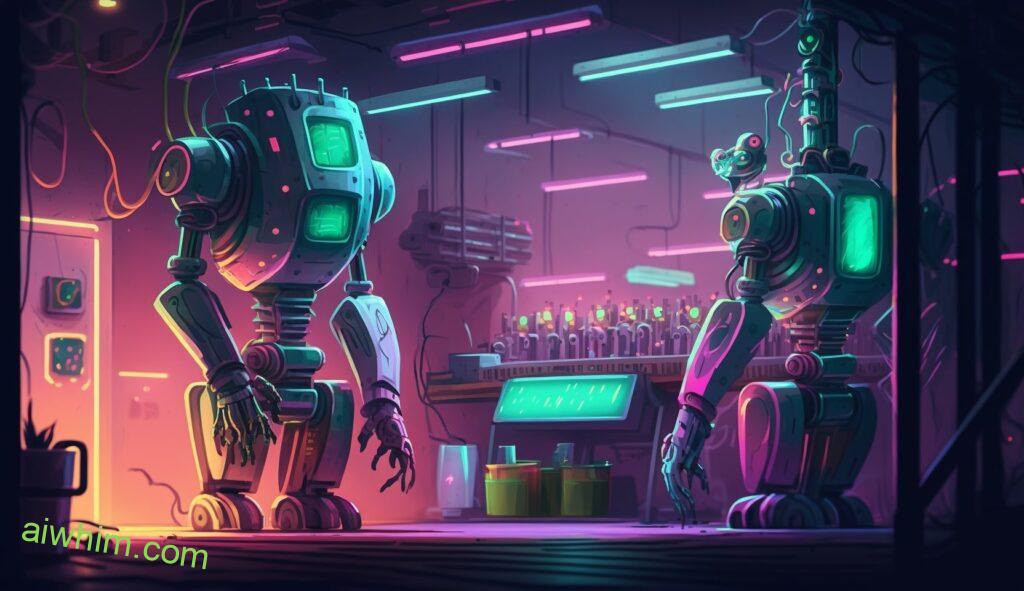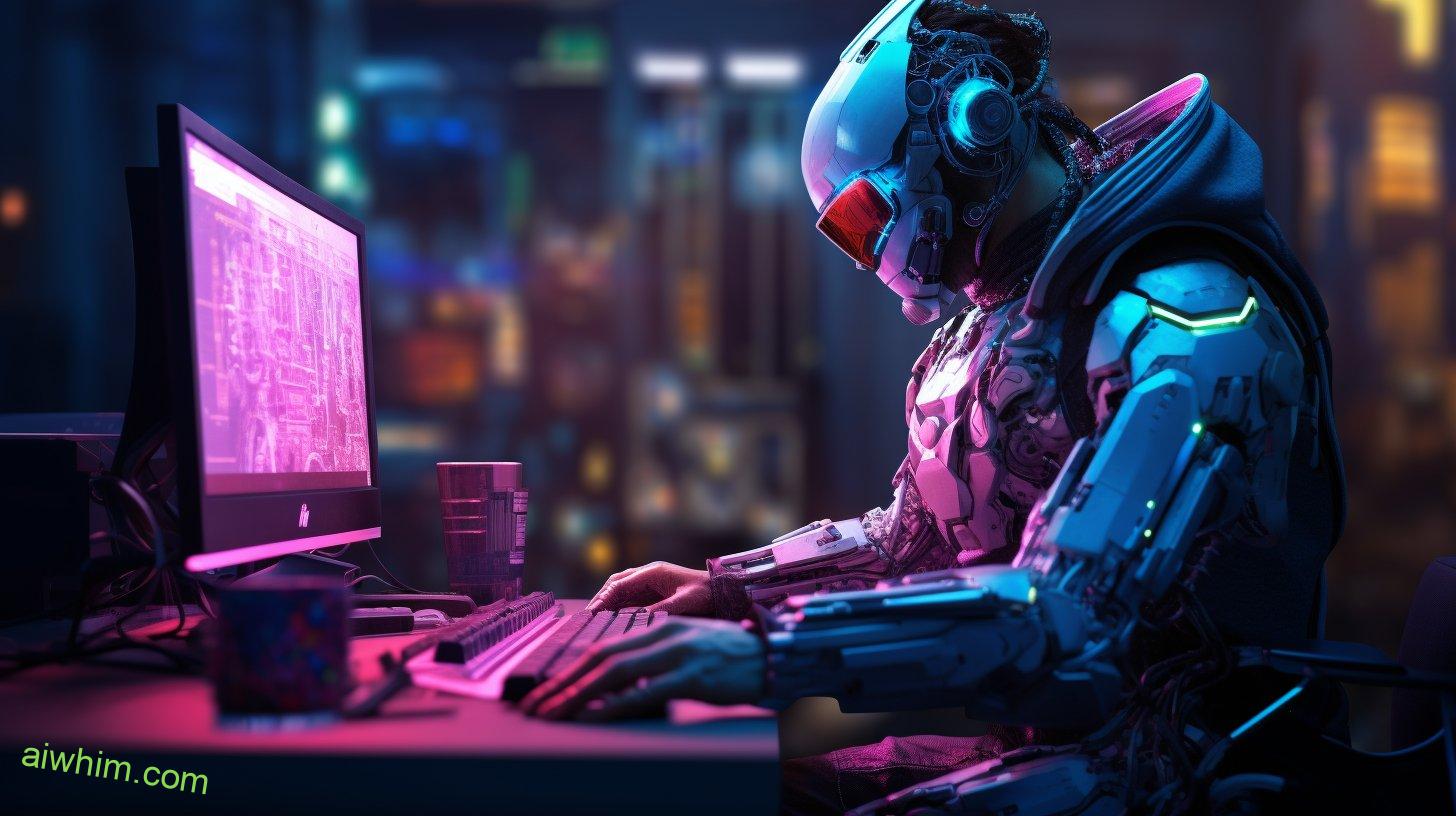Warehouse workers have always been an integral part of the global economy, but with advances in artificial intelligence and automation technology, their jobs are being threatened. It begs the question: will these hardworking individuals be replaced by machines? In this article, we’ll explore how AI and automation is impacting warehouses around the world, and what it could mean for warehouse workers’ futures.
The idea of having robots take over menial tasks typically performed by humans may sound appealing at first glance; however, there is still much uncertainty surrounding what would happen if employers began relying heavily on automated systems instead of hiring real staff members. This article aims to address these concerns by providing insight into how AI and automation might shape our future workplaces and whether or not warehouse workers can expect job security in the years ahead.

This article is about automation job risks specifically in warehouse work. If you are instead looking for information about AI and manufacturing job risks, then read the linked post instead.
Definition Of AI And Automation
The intricate web of artificial intelligence and automation has been woven into many walks of life. AI is a complex network of algorithms that enable machines to comprehend, analyze, and act upon data in ways similar to humans. It’s an incredible asset for performing tasks quickly, accurately, and with minimal energy expenditure. Automation, on the other hand, refers to technology-driven processes that can replicate human behavior without any conscious effort. This includes machine learning—the process by which computers are able to identify patterns from large datasets and use them to make decisions or predictions about future events.
These two technologies have already made their way into warehouses across the globe — robots now drive forklifts; shelves scan barcodes as they’re stocked with goods; pickers sort through items at lightning speed while being monitored remotely via cameras. The question remains though: will these warehouse workers be supplanted by AI and automation?
Proponents argue that this new wave of technological advances offers great potential for increased efficiency and productivity; skeptics point out the cost-benefit analysis may not always favor replacing expensive labor costs with capital investments in high tech solutions. Whatever side one takes on this debate, there’s no denying its implications – it could mean either more jobs in related fields such as programming and electrical engineering or fewer jobs overall if employers opt to reduce staff levels instead of investing in retraining existing personnel. Ultimately, only time will tell whether AI and automation will become commonplace in warehouse settings or simply remain a novelty item used sparingly here and there.
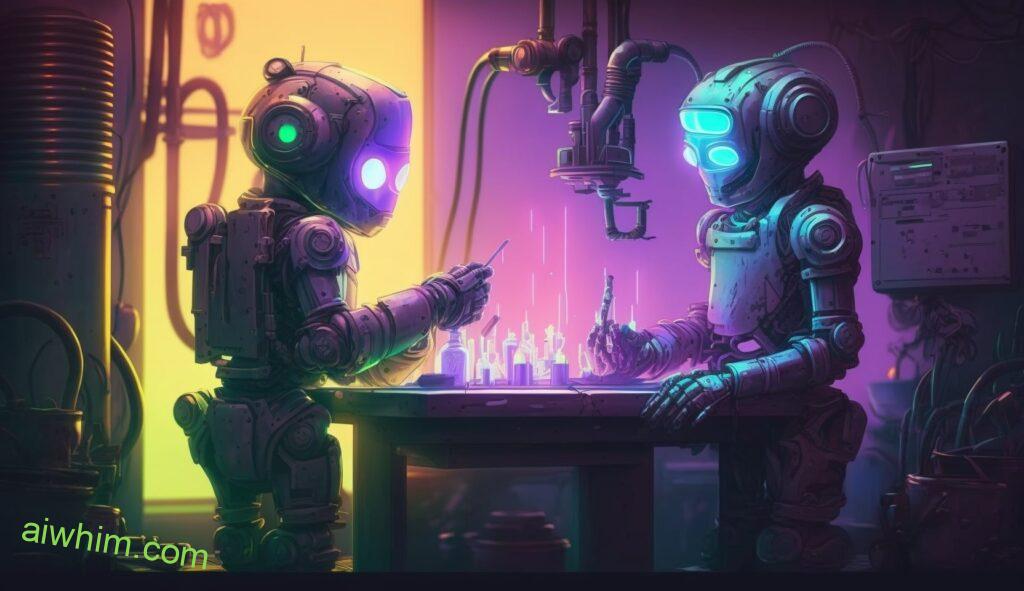
History Of Warehouse Jobs
Warehouse jobs have been around for centuries, with some of the earliest examples found in ancient Greece and Rome. For hundreds of years, warehouse labor has played an important role in economic development and growth. From the Industrial Revolution to modern times, warehouse workers have been responsible for storing and distributing goods throughout countries and regions.
The early 19th century saw a boom in warehouses as industrialization spread across Europe. Railroads increased efficiency and made it easier to transport goods from one place to another quickly. This shift created large-scale employment opportunities for people working in warehouses, who were mostly unskilled laborers coming from rural areas or immigrants looking for work. These positions typically paid lower wages than other industrial occupations at the time.
Today, advances in technology are changing how we think about warehouses and their labor force requirements. Automation is becoming increasingly common within these facilities, reducing the need for manual labor while increasing productivity and efficiency levels. While this could mean fewer job opportunities for traditional warehouse workers, there may be more roles available that require technical skills such as programming or engineering related to automation technologies.
It remains unclear whether AI and automation will ultimately replace human jobs in warehouses altogether – only time can tell what the future holds for this sector of industry’s workforce needs.

Also, here is an article about AI and the future of construction work!
Pros And Cons Of Automation In Warehouses
In this digital age, automation has become an increasingly popular option for warehouses. While the prospect of using AI and automation is exciting to some, it can also be disconcerting to others who are concerned about their job security. In order to understand if warehouse workers will be replaced by AI and automation, let’s examine the pros and cons:
Pros of Automation in Warehouses
- Automation increases efficiency as machines have higher speeds than humans
- By automating mundane tasks, employees can focus on more complex problems that require creativity or decision making
- Reduced costs due to less labor needed to operate machinery
Cons of Automation in Warehouses
- Potential layoffs as fewer people may be needed with the transition from manual labor to automated systems
- Higher upfront costs associated with buying and maintaining new technology
- Risk of errors due to reliance on machine learning algorithms rather than human input
It’s clear that there are both advantages and disadvantages when considering whether warehouse workers should be replaced by ai and automation. Despite potential downsides such as increased costs or unemployment risks, many businesses find that adopting these technologies yields greater cost savings in the long run. Thus it appears likely that while manual jobs may decrease over time, they won’t necessarily disappear completely – new roles will open up as technology advances.

Cost Benefits Of Automation
The pros and cons of automation in warehouses have been discussed, but what about the cost benefits? Automation can provide significant savings for businesses. Through efficient use of resources and automated machines, companies are able to reduce labor costs while increasing production. This leads to financial returns that help improve profits.
One way this works is through reduced overhead expenses due to decreased reliance on manual labor. With fewer employees needed, there are lower operating costs related to salaries, wages and other employee-related expenses such as insurance and taxes. Furthermore, the elimination of human error helps maintain quality control standards which reduces product waste and loss.
Additionally, automation increases efficiency by removing bottlenecks caused by workers who may not be experienced or trained properly. Businesses can also benefit from improved customer service when they replace warehouse workers with AI-driven bots that respond quickly to orders and inquiries instead of waiting for a person to take action. In addition, automating certain processes like inventory management saves time so businesses can focus more on growing their business rather than managing day-to-day activities.
Overall, utilizing automation technology in warehouses offers a variety of cost benefits including reduced overhead expenses, increased efficiency, better customer satisfaction and faster turnaround times for orders and inquiries. These advantages make it easy to see why many businesses choose automation over hiring additional staff members – the financial returns speak for themselves!

Potential Impact On Employment Levels
As the technological revolution continues to sweep through various industries, warehouse workers are left wondering if their jobs will be replaced by AI and automation. While there is a great deal of uncertainty surrounding this issue, it seems clear that the impact of automation on warehouse employment could have far-reaching effects. Like dark clouds in the sky, these changes can seem daunting, but they also bring with them potential opportunities for those willing to embrace them.
First off, advancements in technology such as automated robots may help reduce or eliminate certain job roles within warehouses. This could lead to fewer positions available for manual labor, resulting in fewer people employed in the work sector overall. However, it’s important to keep in mind that some tasks currently done manually may become easier or even more enjoyable when assisted by AI and automation technologies. This means new openings created over time might provide fresh career paths for individuals looking to gain experience and increase their work flexibility.
In addition, automation can free up employees from mundane or repetitive tasks so they can focus on higher level activities such as problem solving and creativity. For example, instead of having workers spend hours sorting items into predetermined categories, advanced algorithms may be able to do this faster and more accurately than humans ever could – allowing staff members to shift their attention towards more complex projects where human input is invaluable.
Ultimately, while there may be an initial dip in warehouse employment due to job displacement caused by AI and automation, there are still plenty of ways for businesses and individuals alike to benefit from these emerging technologies. With careful planning and consideration taken into account during implementation processes, everyone involved should stand poised to reap considerable rewards from embracing change rather than running away from it.
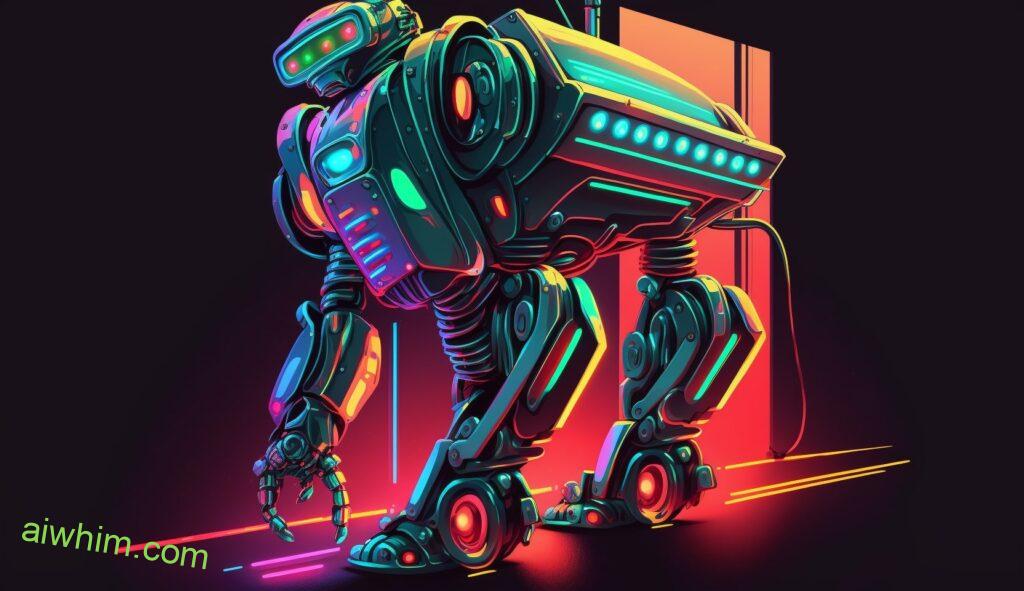
How AI Is Currently Being Used In Warehouses
The answer to the question of whether warehouse workers will be replaced by AI and automation is complicated. As technology advances, it has become increasingly clear that some jobs can indeed be taken over by robots and automated processes. In warehouses, a variety of AI applications and robotic machines are already being used to automate physical tasks such as sorting items or loading goods onto trucks. Although this means fewer human employees in certain roles, many companies have adopted these technologies with the goal of improving worker safety while simultaneously increasing productivity.
AI-driven systems are also being implemented for inventory control and order fulfillment. By using predictive analytics, an advanced AI system can determine which products should be stocked more quickly than any manual process could hope to achieve. This not only speeds up operations but also reduces human error when making decisions about supply chain management. Automated checkout stations are another example of how AI is changing the way warehouses operate; customers no longer need cashiers because their orders can now be scanned directly from their smartphones.
In short, AI and automation are having a significant impact on warehouses across industries – one that looks set to continue into the future. With its potential for increased efficiency and improved customer service, there’s no doubt that its use will increase over time as businesses seek out new ways to remain competitive in today’s marketplaces.

Ethical Considerations For Replacing Workers With Machines
The ethical implications of replacing human workers with machines must be considered. Automation ethics involves questions about whether it is acceptable to displace people in favor of robots or other technologies, as well as any potential impacts on society. There are several key areas that need to be addressed when considering the ethical implications of automation and AI displacing warehouse workers.
First, there is the question of job security for those who may be displaced by automation or AI. If a machine can do the same job faster, cheaper, and more efficiently than a human worker, then that individual’s employment could become insecure. This raises moral dilemmas such as whether an employer has an obligation to support their employees during periods of displacement due to technological advancement.
Second, there are concerns over safety and liability if something goes wrong while using automated equipment. Machines don’t always make mistakes like humans do, but they can still malfunction which can lead to accidents or injuries if not properly monitored. Therefore, it is important to consider what kind of safety measures should be implemented when deploying new technology into the workplace.
Finally, another issue related to automation ethics is how its use will affect social relationships between co-workers and employers. The introduction of new technologies could lead to feelings of isolation among those directly affected by displacement, while also creating tension between management and labor due to perceived unfairness in terms of compensation and benefits packages offered after relocation from manual jobs to automated ones. It is essential that these issues are taken into account when deciding whether or not to introduce AI or other forms of machine displacement into a work environment.

Current Regulations Regarding Automation Use
The use of automation in warehouses is subject to a variety of regulations. These regulations, which are designed to protect workers and ensure that they can continue to earn livable wages, form part of the legal framework governing automation labor laws.
When it comes to warehouse automation, it’s important to understand what type of technology is allowed under the law before using it. In many cases, certain types of robotic systems may be prohibited or require special permission from local authorities. Additionally, there may be restrictions on how much automation is permitted within a specific facility or jurisdiction.
Finally, employers must adhere to the safety requirements established by their state or municipality when utilizing automated equipment in the workplace. This includes providing adequate training for personnel who will operate such machinery and incorporating appropriate safeguards into each system. It’s also critical that organizations remain aware of any changes made to existing laws regarding warehouse automation and adjust accordingly.

Types Of Warehouse Jobs AI And Automation Could Replace
It’s no secret that the job market is changing. As AI and automation become more prevalent, many are left wondering if their jobs will be replaced by robots. The answer isn’t simple, as different types of tasks require different degrees of automation. However, one thing is certain: some warehouse roles may soon be performed by machines.
From robotic arms to automated forklifts, there are a number of innovations in the warehouse space that could displace human workers:
- Warehouse robots – Robots can rapidly move around warehouses and transport items from one area to another without needing breaks or rest periods.
- Automated forklifts – Automated forklifts are becoming increasingly popular due to their ability to lift heavy loads with ease and accuracy. They also don’t need regular maintenance like manual lifts do.
- Robotic arms – Robotic arms have long been used to automate tedious processes such as packing boxes and sorting items on shelves. Their accuracy makes them ideal for these kinds of repetitive tasks that people would otherwise find boring or uncomfortable to perform manually.
- Artificial intelligence (AI) – AI-driven solutions can help optimize operations in warehouses by managing inventory levels and predicting customer demand accurately, among other things.
The introduction of AI and automation into the workforce has sparked heated debates about its potential effects on employment opportunities worldwide – but it’s clear that they are here to stay, at least in the foreseeable future. For those who want greater freedom from mundane laborious tasks, these technologies offer an exciting opportunity for liberation from traditional workplace routines while still allowing them to enjoy meaningful work experiences elsewhere!
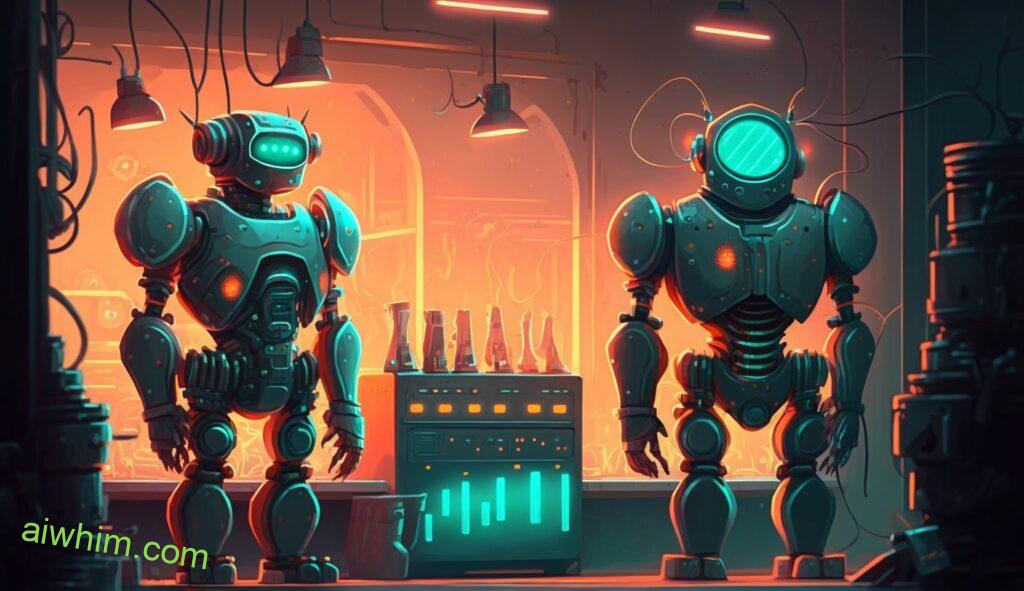
Potential Solutions To Displacement Of Human Workers
The potential displacement of warehouse workers due to AI and automation is a concerning issue that requires immediate attention. In order to prevent job losses, there are three viable solutions: job retraining, job relocation, and job diversification. Each solution has its own advantages and drawbacks for both employers and employees alike.
Job retraining entails providing human workers with the training necessary for them to transition into other roles in the industry or profession; this could involve learning new skills or gaining more experience in existing ones. Although it can be costly for companies to provide such training, it offers greater security for displaced workers as they will still have jobs within their field. Additionally, job retraining allows businesses to take advantage of an increasingly competitive labor market by hiring experienced professionals who may not otherwise have been available.
Job relocation involves moving a worker from one region or sector to another where similar positions are available. This creates opportunities for those affected by automation while also allowing businesses access to larger talent pools in different areas. However, some people might not be willing or able to move away from their home regions due to family obligations or financial constraints. As such, job relocation should only be pursued when all other options have been exhausted.
Finally, job diversification can help minimize the impact of automation on employment levels by encouraging individuals to explore multiple career paths simultaneously rather than relying solely on one type of work. By having multiple sources of income, people would be less likely to suffer financially if their primary source of employment were threatened by automation; furthermore, this approach encourages creativity and innovation among the workforce which can ultimately lead to increased productivity across many industries.
In summary then, although AI and automation pose a threat of displacement for human workers in warehouses, these risks can be mitigated through careful planning and implementation of strategic initiatives such as job retraining, job relocation, and job diversification programs. Doing so would ensure that current employees are protected while also creating fresh opportunities for future generations entering the working world.

Possibility Of Co-Existence Between Humans And Machines
The future of warehouse workers is uncertain as advances in artificial intelligence and automation have made it possible for machines to do the work that was once done by humans. But, can there be a coexistence between human-machine and machine-human?
The idea of a working relationship between man and machine has been gaining traction with recent trends in technology. It’s no longer just about replacing people with robots, but rather using both together to create efficiencies and boost productivity. For example, robotic arms are now being used alongside human laborers on factory floors to increase speed and accuracy while reducing errors. This type of collaboration leads to improved customer service, reduced costs, and increased profits.
So far, this kind of cooperation seems to be successful when applied correctly; however, we must also consider potential issues that could arise if not managed properly. If machines take over too much of the workforce, then there may be an imbalance in power dynamics or even displacement of labor due to job losses. Additionally, worker safety could become an issue as automated systems replace manual processes which were monitored by trained personnel before.
It remains unclear what will happen next in terms of how AI and automation impact warehouse workers. While some fear that these technologies will lead to unemployment for many people, others believe they will open up new opportunities for those willing to learn new skills and adapt their existing ones. We must remain vigilant in our efforts towards creating an environment where humans and machines can exist side by side without either one taking precedence over the other or causing harm.
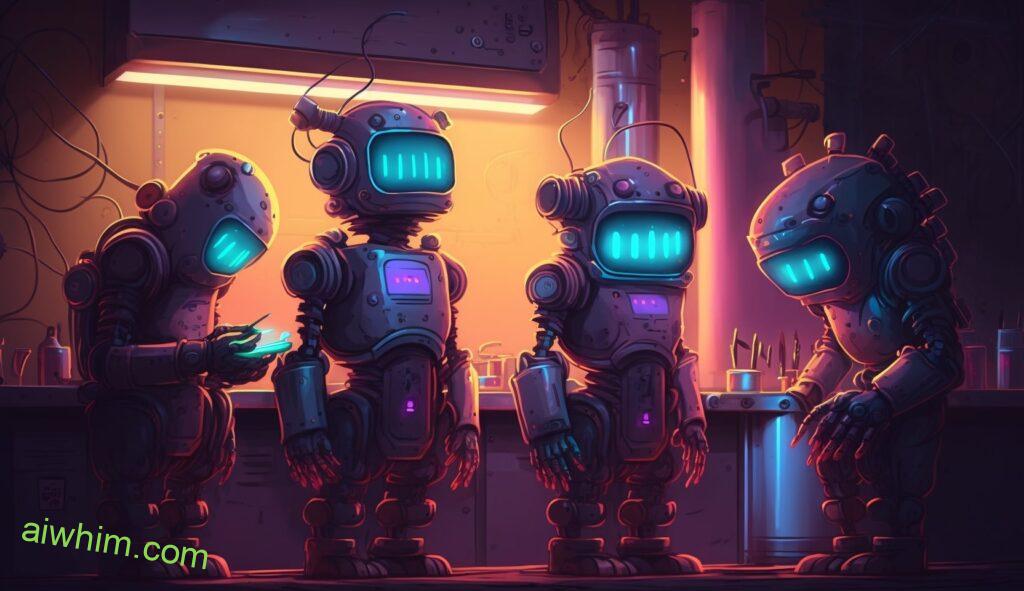
Safety Implications For Employees Working Alongside Machines
As businesses across the globe embrace automation, safety concerns arise for warehouse workers who will be working alongside machines. Automation safety is an issue that must not be overlooked; it’s crucial to ensure that both workers and machines are safe around each other in the workplace. Machine safety should always take priority when introducing new automated systems into warehouses. This means taking certain measures such as implementing proper training programs and providing appropriate safety equipment.
It’s also important to remember that worker safety must remain a top priority regardless of advances in technology. Making sure workers have enough space between them and any automated machinery, as well as ensuring they don’t overexert themselves by lifting too much weight or doing repetitive motions without rest are essential steps to keep employees safe from injury while on the job. Furthermore, regular breaks should be taken throughout the day so workers can stay alert and focused during their shifts.
When considering how to safely introduce AI and automation into warehouses, employers need to think about more than just efficiency gains — they need to make sure all personnel involved are kept safe at all times. By investing in comprehensive health and safety protocols for both machine use and manual labor, companies can create a work environment where every employee feels secure knowing their wellbeing is prioritized above everything else.
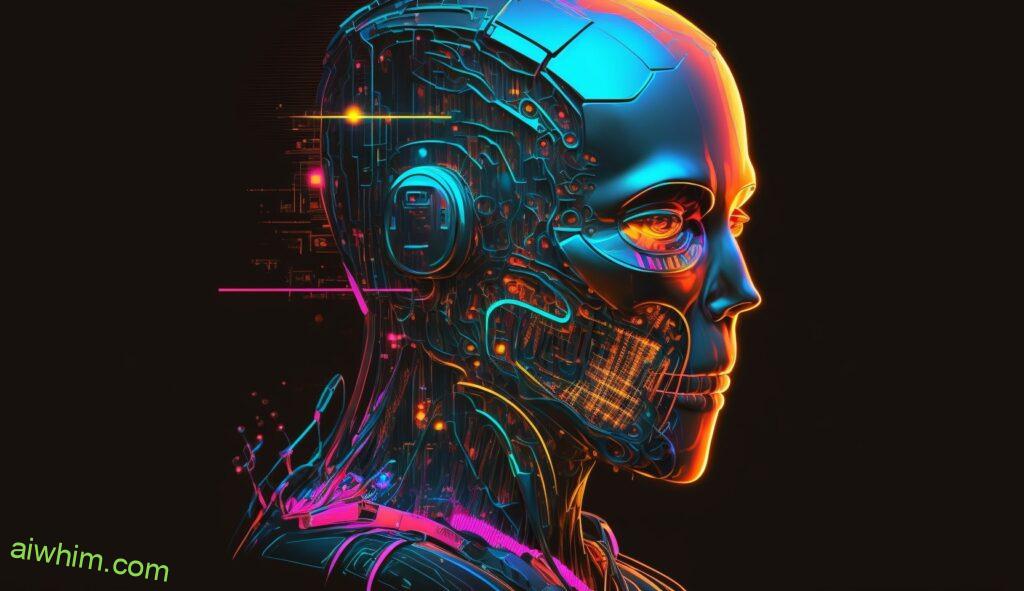
Educational Requirements For Workers In An Automated Era
It’s been said that the future of work is automation: robots replacing humans in warehouses and other traditional job sites. But what if this was an opportunity, not a threat? What if we could use automated environments to create better educational opportunities for workers?
We have already seen how advances in technology can lead to increased efficiency and productivity – why not use the same principles to help educate the workforce? Automation education offers exciting new possibilities. With artificial intelligence (AI) taking on more complex tasks in warehouses and factories, it opens up space for workers to develop their skills with specialized training courses tailored to their individual needs. This would allow them to hone their craft and become experts in areas such as robotics or AI programming.
This focus on automation education could be beneficial for both employers and employees alike. Employers could benefit from having access to a highly skilled workforce who are knowledgeable about the latest technologies, while employees would gain valuable experience which could open up pathways into higher-paying jobs or even entrepreneurship. Furthermore, by investing in automation education, companies will ensure they stay ahead of technological developments and remain competitive in the market place.
The advantages of an automated environment are clear but so too are the challenges associated with working alongside machines. To prepare today’s workforce for tomorrow’s world, businesses must invest in providing quality training programs that equip individuals with technical knowledge as well as soft skills such as problem solving and team building. After all, there is no replacement for human ingenuity when it comes to finding solutions that best leverage automation tools across industries.

Impact On The Economy And Social Infrastructure
The impact of automation and AI on the warehouse workers has far-reaching economic implications. Automation and AI can be used to replace manual labor, which means that jobs may become fewer for those involved in physical work. This could cause a decrease in wages, leading to an overall decrease in family income within local communities. On a larger scale, it could lead to increased inequality between different social groups due to lack of wealth or resources.
Moreover, with the introduction of new technology into warehouses comes changes in the infrastructure required for these systems. This might include additional digital equipment or machinery needed to support automated processes. These changes will require investment in order to maintain efficiency over time and this cost may need to be absorbed by businesses, resulting in higher costs passed onto consumers.
In addition, there is potential for disruption across society as people are forced out of their current positions and have difficulty finding suitable alternative employment opportunities. The knock-on effect could result in displacement of many skilled individuals leaving them unable to contribute towards their community’s growth and development. Thus, replacing warehouse workers with automation and AI must be done cautiously taking into consideration the full range of economic and social impacts such a shift would cause.

Predictions: Future Use Of AI And Automation In Warehouses
The future of warehouse automation and AI has yet to be determined. While some may predict that these technologies will completely replace workers, it is more likely that they will supplement existing roles in the workplace. Automation could be used to reduce mundane tasks, allowing workers to focus on other aspects of the job or take on new responsibilities. AI prediction could help with forecasting demand, ensuring accuracy and efficiency in stocking shelves and managing inventory levels.
As technology continues to advance at a rapid rate, warehouses are sure to become increasingly automated over time. With robots becoming smarter and able to complete complex tasks, such as picking products for orders, many of the manual processes currently carried out by human labor could soon be replaced by machines. The use of robotics combined with AI-based decision making can lead to greater operational efficiency within warehouses than ever before seen. This would benefit both employers and employees alike as productivity increases while eliminating tedious jobs from the equation.
Ultimately, there’s no telling what the future holds for warehousing operations – although it seems certain that increased automation and AI utilization will play an integral role in their success going forward. As these technologies continue to evolve, we’ll have a better idea of how best to leverage them for maximum benefit across all parts of the business landscape.
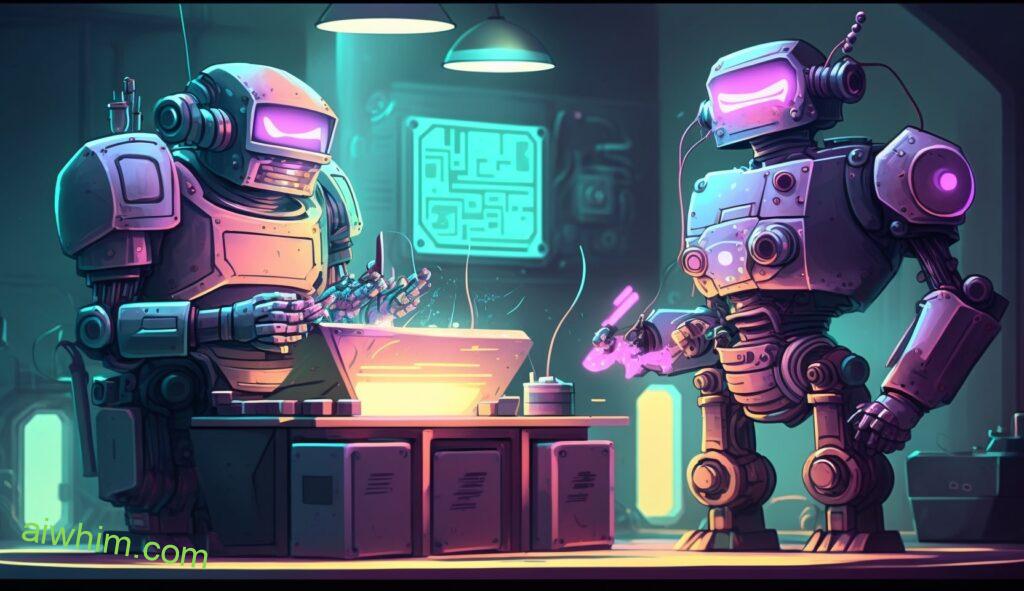
In Conclusion
In conclusion, AI and automation are increasingly present in warehouses across the globe. We can see from this article that there is potential for automation to create cost savings and improved safety conditions for employees who work alongside machines. Yet, it is clear that significant changes would be needed to ensure workers have the necessary skills and qualifications required to fit into a more automated environment.
It is also important to consider the wider implications of increased automation on society as a whole. There could be further economic benefits if businesses reinvest savings back into their workforce or local communities but there will need to be careful consideration given to how those resources are used.
Ultimately, only time will tell whether AI and automation replace traditional warehouse jobs entirely or if employers find other ways of integrating them effectively without reducing job opportunities significantly.
Author: Ole Paulson
Author Bio: I’m Ole and on this website, I share everything there is to know about Artificial Intelligence, and useful tips for using AI to our advantage. I have a background in data science and research and have been following the AI-space for years. You can read more about me in the “About” page.

